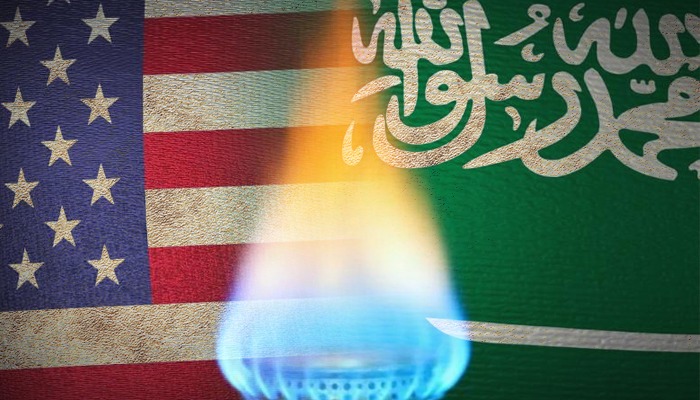In 2017, according to the US Energy Information Administration, Saudi Arabia, following Russia, Iran and Qatar, had the fourth-largest natural gas reserves in the world. According to the US Energy Information Administration, the country’s natural gas reserves amounted to 304 trillion cubic meters. Most of Saudi Arabia’s natural gas is consumed in the petrochemical sector and electricity generation. 40.7% of the country’s energy comes from natural gas.
Natural Gas in 2030 Vision
Electricity production has increased due to the significant growth of the population. The 2030 vision emphasizes an increase in non-oil exports, such as petrochemicals. Within the terms of this plan, gas is considered the “main supplier” of electricity which was emphasized in the development priorities of the Kingdom. Relying on natural gas in electricity generation will reduce greenhouse gas emissions. Saudi Arabia’s vision for 2030 emphasizes the need for the country to act on international agreements to combat climate change. Utilizing gas instead of oil will lead to maintaining the economic value of oil, which is the main objective of the initiative.
Saudi Arabia plans to become a shale gas producer by 2020. According to recent statements by Aramco, $7 billion is being spent on drilling for shale gas extraction. Saudi Arabia is using modern technologies to overcome the problem of dehydration in the process of shale gas production. As Saudi Arabia seeks to become a major gas producer, it is worth mentioning that investing in natural gas development there or abroad (such as the project to work with Russia on LNG in the Arctic) is a strategic goal and an important future vision for the country. The world is moving toward a low-carbon economy and natural gas will be a major option for global investors in the decades to come. Gas investment at the domestic and global level is beneficial to achieving the 2030 vision and to diversify sources of income and reduce the dependence of the economy on oil and provide a sustainable future for clean energy such as natural gas.
Saudi Arabia is one of the largest producers and exporters of petrochemicals. Saudi Arabia’s SABIC is the largest Middle Eastern petrochemical company and one of the five largest petrochemical companies in the world. The fact is that the Saudi economy, including the non-oil private sector, is heavily dependent on government spending from oil revenues. In addition, the political stability of the country is directly related to the ability of the government distributing funds to the people, including the creation of jobs in the public sector.
Saudi Arabia continues to depend on its oil revenues to meet its short-term plans, and since oil prices have plummeted since 2014, the country is struggling to offset some of its oil revenues with its high level of oil exports. Therefore, the policy of preserving the market share of the country will be a dominant policy in the coming years. Another possible policy for the country is an increase in the attraction of foreign capital.
According to the International Energy Agency, due to lower investment income in the oil industry, competition in the market has intensified, and large oil companies seem to be more inclined to engage in development projects and increasing their recycling rates.
The Saudi’s plan to invest in US Shale terminals
The dramatic progress made in the shale gas industry in the United States has changed the country from an energy importer to an energy exporter. Shale gas has had a major impact on energy prices around the world. Prior to the Shale Gas Revolution, which was driven by advanced technology and innovation, America’s dependence on external energy sources, especially the Middle East, was on the increase. According to the US Energy Information Administration in 2018, the country produced more than 10 million barrels of oil per day. During Obama’s time, in 2011, America was provided 52 percent of its oil imports from OPEC.
The United States exported an average of 4 million barrels per day in 2018. The United States uses energy exports, especially LNG, to expand its relations with its neighbors and allies everywhere in the world. The energy security of the European Union and its strong dependence on Russian gas have led the United States to have a special look at the energy market of the European Union, and with the increase in LNG exports along with the acceleration of the construction of the Southern Corridor, gas needs will entail dependence on Russia.
Slowly, the East Asian market, especially South Korea and Japan, which imports the majority of gas condensate from Iran, is becoming a good opportunity for LNG to play a role in South Korea’s energy security. Looking at the state of imports of Iranian oil and gas condensate from Iran, the LNG role of the United States could be furthered under boycotts of Iran.
Saudi Arabia is looking to invest in US natural gas. The Kingdom is considering Tellurian’s proposed Driftwood LNG export terminal in Louisiana and Sempra Energy’s Port Arthur LNG facility in Texas. For example, Tellurian seeks equity partners who would buy stakes in Driftwood and receive LNG that they could use themselves or resell at a markup.
US LNG exports
The United States became an energy exporter after the shale gas revolution. It uses energy exports to expand ties with its allies. According to the US Energy Information Administration, the country issues an average of 2.9 billion cubic meters of gas and LNG daily to 36 countries each year, and according to a short-term plan by the US Department of Energy, by the end of 2020 gas exports will reach 5.8 Billion cubic meters. In the meanwhile, the Saudi Arabian energy market and the Arab energy market, in general, are potential options for future US LNG exports. Saudi Arabia, along with an investment to increase gas production from domestic sources, aims to reduce its dependence on oil production in the country, intends to import LNG from the US while investing in LNG projects in Russia. Aramco plans to purchase five million tons of natural gas from the Sempra Energy over the next twenty years. Aramco intends to introduce its LNG strategy and invest in its energy projects. The company had previously invested in energy projects of major energy consuming countries, such as China and India.
Reducing the cost of shale gas production in the United States is one of the factors behind Aramco’s investment in shale projects in the country. Amin Nasser, chairman of the Aramco Corporation, in a January 2019 interview with Reuters, announced the company’s plan to buy billions of dollars in LNG terminals from the United States. Amin Nasser called for Aramco to become an actor in the gas market, “We want more investment in the United States,” he said. The Aramco Gas International Team has a plan to invest in the entire supply chain. The company has been given significant multi-billion-dollar financial strength. “
According to Nasser, the company plans to become a gas exporter by 2030. He told Aramco to invest $150 billion in the natural gas sector in the next decade. LNG imports from the United States and the possibility of gas from domestic sources can help the country reduce its excessive reliance on oil-based electricity generation. More natural gas, along with an increase in LNG imports from the United States to Saudi Arabia, will produce more than 725,000 barrels of oil per day, which is used to produce electricity in the summer.
Aramco’s investment at the American LNG Terminals and the company’s simultaneous efforts to invest in Russia’s Arctic LNG 2 are indicative of the company’s will and plan to become more active in the natural gas market. The company does not want to give away any other energy companies in the oil, gas and petrochemical sector. The company will become an active actor in the global gas market if it succeeds in investing in American and Russian oil and gas projects. Aramco will play an active role in the country’s future foreign policy.









Leave a Reply